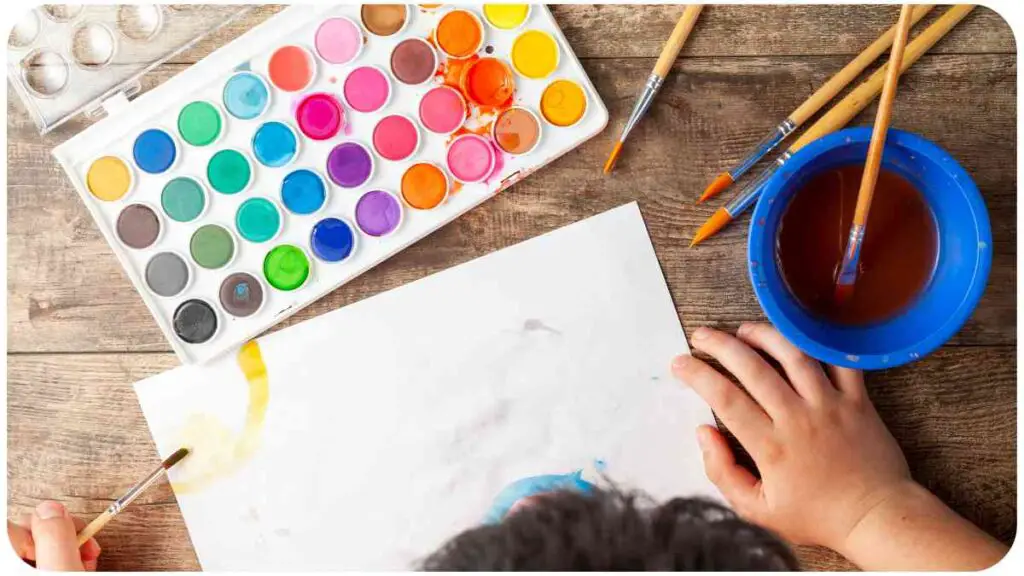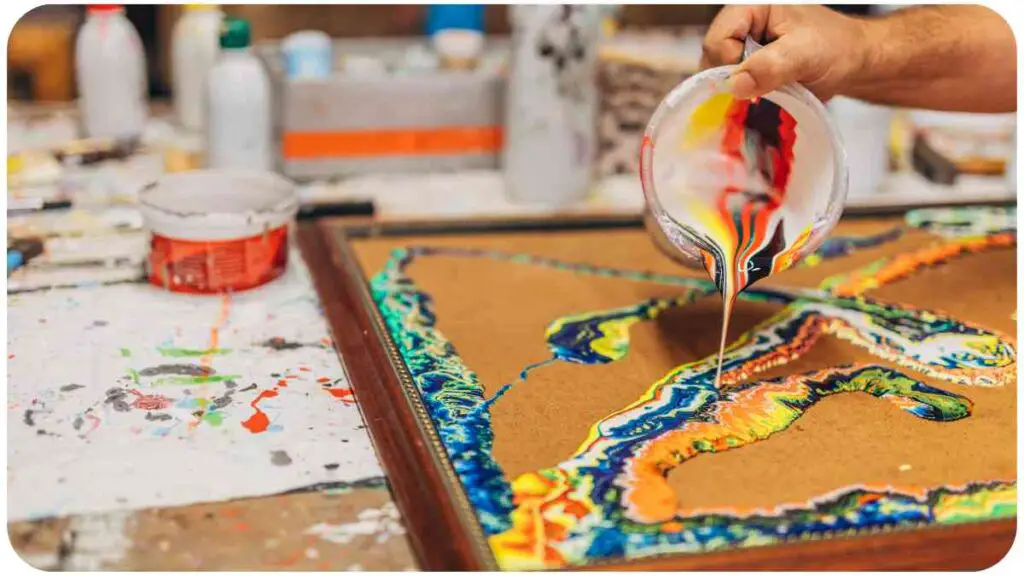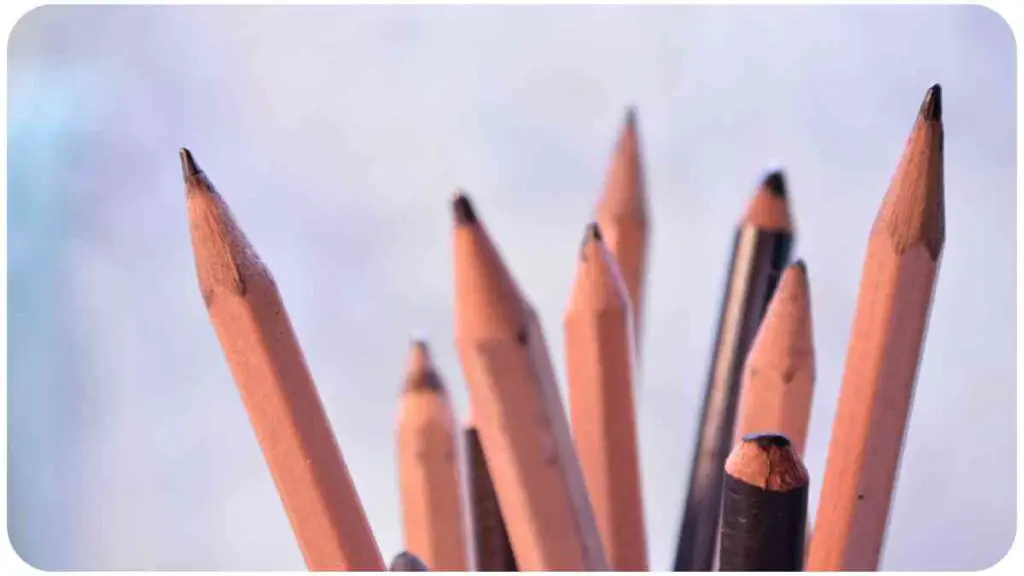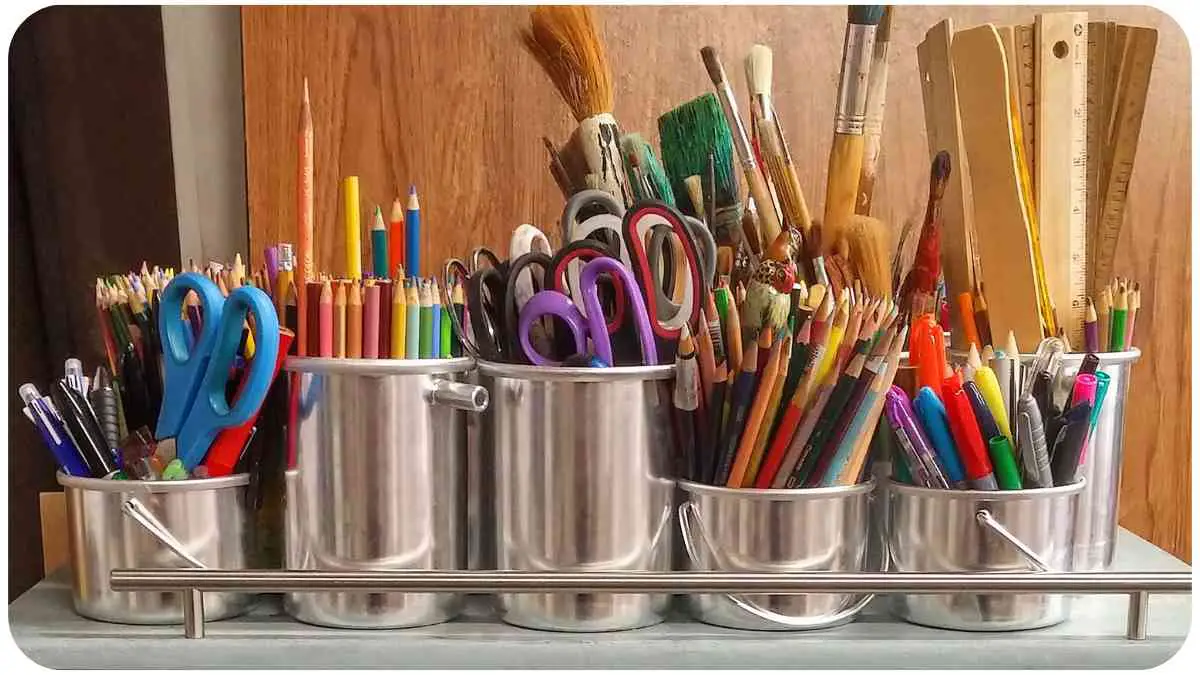Art supplies are an investment, and nothing is more disheartening than discovering your favorite materials have gone bad. This guide explores the shelf life and care of various art materials, ensuring your paints, pencils, and more stay vibrant for as long as possible.
| Art Material | Key Takeaway |
|---|---|
| Oil Paint | Optimal storage conditions for oil paints include airtight containers, avoiding temperature changes. Be cautious of lead content, and monitor for oil and pigment separation over time. Safely discard compromised paint. |
| Pencils | Handle pencils gently to prevent invisible breakage, particularly of the lead inside. Learn proper sharpening techniques using a razor blade. Store pencils in a cool, dry place, and avoid dropping them to ensure longevity. |
| Watercolors | Watercolors can be revived by cutting open tubes and adding water and powdered gum arabic. Maximize shelf life by keeping them airtight, dry, and clean. Watch for signs of separated gum arabic. |
| Gouache | Prevent mold development in gouache by tightly sealing caps and maintaining the seal. Consider additives like honey or glycerin. Keep caps secure and dry for extended gouache life. |
| Acrylic Paint | Invest in artist-grade acrylics for longer usability. Keep them dry and use them quickly. Acrylic wetting agents and mixers can help revive dried paint. Detect signs of deterioration by a sour smell. |
| Charcoal & Graphite | Indefinite shelf life for charcoal and graphite when stored in BPA-free, non-toxic containers. They age beautifully and remain intact forever if kept cool and dry. |
2. Oil Paint
2.1 Shelf Life
Oil paints boast a remarkable shelf life of 30 to 40 years when stored properly. Keeping them airtight and dry in a cool, dark place is essential. Temperature and light changes should be avoided, and cleanliness is crucial to prevent damage to the tubes.
| Storage Conditions | Shelf Life |
|---|---|
| Airtight and Dry | 30 – 40 years |
| Exposure to Elements | Risk of Deterioration |
2.2 The Lead Concern
Older oil paints, particularly white shades like Flake White or Cremnitz White, might contain lead. Be cautious with these, as lead exposure is dangerous. Regularly check whites, discard old lead-based ones, and prioritize safety.
Elevate your artistic journey by learning how to choose durable art supplies. Delve into the intricacies of materials that stand the test of time, ensuring your creations withstand the rigors of artistic expression.
2.3 Signs of Deterioration
Over time, oil may separate from the pigment, degrading paint quality. Watch for oil and pigment separation; if compromised, consider replacing the paint.
2.4 Proper Disposal
Dispose of old paint safely, considering environmental impact. Check local regulations before discarding in landfills.
3. Pencils
3.1 Shelf Life Determinants
Pencils, though without a clear expiration date, suffer when the lead inside is broken. Dropping them causes invisible breakage, impacting longevity.
| Factors Impacting Shelf Life | Recommendations |
|---|---|
| Broken leads | Handle with care, avoid dropping |
3.2 Impact of Trauma
Pencils are sensitive and prone to breakage. Drop them, and you set them on a downhill ride towards degradation. Sharpen broken leads carefully using a razor blade for finer points.
3.3 Sharpening Techniques
Learn the art of pencil sharpening with a razor blade for better lead control. Store pencils in a cool, dry place to extend their lifespan.
Unveil the secrets to creating timeless art with insights on preserving your artwork. Discover practical tips that extend the lifespan of your masterpieces, safeguarding the essence of your artistic vision for years to come.
3.4 Storage Recommendations
Avoid dropping pencils to prevent invisible damage. Keep them in a cool, dry place to maintain lead quality.
4. Watercolors

4.1 The Role of Gum Arabic
Watercolors rely on gum arabic from Acacia trees as a binding agent. Over time, separation occurs, resulting in hard tubes. DIY re-hydrating techniques can revive them.
| Tips for Reviving Watercolors | Preventive Measures |
|---|---|
| Cut open and re-wet with water | Keep watercolors airtight, dry, and clean |
4.2 DIY Re-hydrating Techniques
For hard, cracked watercolors, use a scalpel knife, add water and powdered gum arabic to re-wet, pour, and reset. This may extend their expiry, but quality may be compromised.
4.3 Maximizing Shelf Life
Airtight, dry, and clean storage is crucial. Avoid stuffing water or wetting agents back into paint tubes, ensuring even rehydration.
4.4 Warning Signs
Watch for split watercolors, usually indicated by separated gum arabic. Once irreparable, consider replacement.
Explore the world of art as an investment by understanding the longevity of your materials. Gain valuable knowledge on maximizing the lifespan of your supplies, making informed choices that elevate your artistic practice.
5. Gouache
5.1 Mold Development
Gouache, when exposed to oxygen, often develops mold inside the tube. Bleed Proof White is particularly prone to this. Artists combat mold by adding honey or glycerin to acrylic-based paints, enhancing texture and spreadability.
| Common Issues | Preventive Measures |
|---|---|
| Mold development | Add honey, glycerin; keep caps tightly sealed |
5.2 Preventive Measures
To deter mold, ensure caps are screwed tightly, keeping them dry. Maintain the seal where the cap comes on and off for optimal gouache longevity.
5.3 Adding Texture with Honey and Glycerin
Artists experiment with additives like honey and glycerin. While these won’t extend drying time, they keep gouache sticky for a more extended period.
5.4 Handling Caps and Seals
Tighten caps securely to prevent oxygen exposure. Regularly check and maintain the seal for several great years of vibrant gouache.
Embark on a comprehensive journey to maximize the lifespan of your art supplies. Uncover practical strategies to extend the longevity of your materials, ensuring each stroke contributes to a lasting legacy of creativity.
6. Acrylic Paint

6.1 The Synthetic Nature
Unlike organic matter, acrylic paint, being synthetic, doesn’t have a clear expiration date. However, it’s prone to drying out and mold development.
| Key Considerations | Recommendations |
|---|---|
| Quality matters | Invest in artist-quality acrylics, not student-quality |
| Drying speed | Keep them dry, use quickly, and consider acrylic mediums |
6.2 Quality Matters
Invest in quality acrylics, as they tend to have a longer usable lifespan compared to lower-grade student-quality paints.
6.3 Extending Shelf Life
To combat fast drying, consider acrylic wetting agents and mixers. These additives can help revive dried paint and maintain its usability.
6.4 Sensing the Signs of Deterioration
A telltale sign of acrylics going bad is a sour, mildew stench. While they may still be usable, a noticeable off-smell signals their decline.
Discover the art of balancing quality and quantity by choosing practical approaches to art supplies. Elevate your artistic process with insights on prioritizing quality, enabling you to create enduring masterpieces that withstand the test of time.
7. Charcoal & Graphite

7.1 Everlasting Shelf Life
The good news for charcoal and graphite enthusiasts is their indefinite shelf life. These mineral-based materials remain intact forever, provided they aren’t crushed or exposed to moisture.
| Factors Impacting Integrity | Preservation Tips |
|---|---|
| Crushing or wet environments | Store in BPA-free, non-toxic plastic bins |
7.2 Storage Containers
To ensure the everlasting life of charcoal and graphite, store them in BPA-free, non-toxic plastic containers. This prevents exposure to moisture and environmental contaminants.
7.3 Preservation Tips
Charcoal and graphite age beautifully and don’t crumble over the years. As long as they’re kept cool and dry, you can rely on their enduring quality.
8. Conclusion
Preserving your art materials is an art form in itself. Understanding the nuances of each medium and adopting proper storage practices can significantly extend the life of your supplies. Whether it’s oil paints, watercolors, gouache, acrylics, or charcoal and graphite, each material demands a unique approach.
Be attentive to signs of deterioration, stay informed, and share your experiences in the comments below. Your tips and tricks may help fellow artists maintain the vitality of their beloved art materials.
Further Reading
- Martha Stewart – Paint, Glue, and Craft Supplies Expiration Dates: Storage Tips: Martha Stewart’s comprehensive guide provides insights into the expiration dates of various craft supplies, including paint and glue. Learn effective storage tips to maximize the shelf life of your art materials.
- Potato Art Studios – Used Art Supplies Part 4: Identifying Product Conditions and Remaining Shelf Life: Delve into Potato Art Studios’ series on used art supplies, focusing on identifying product conditions and understanding the remaining shelf life. Gain valuable knowledge on assessing the state of your materials.
- Redbubble Blog – When Do Art Materials Expire?: Explore Redbubble’s blog post that discusses the expiration of art materials. Uncover valuable insights into the factors that contribute to the longevity of your supplies and discover tips for preserving their quality.
FAQs
How long do oil paints typically last?
Oil paints can have a remarkable shelf life of 30 to 40 years if stored in optimal conditions. However, careful monitoring is necessary, as over time, the oil may separate from the pigment, impacting quality.
What are the key considerations when storing watercolors?
Maintaining airtight, dry, and clean storage conditions is crucial for watercolors. Avoiding direct stuffing of water or wetting agents back into tubes ensures even rehydration, extending the paint’s usability.
Is there a way to prevent mold development in gouache?
To deter mold in gouache, ensure that caps are tightly screwed on and that the seal where the cap comes on and off is well-maintained. Adding honey or glycerin can also help in preventing mold development.
How can I extend the shelf life of acrylic paints?
Investing in high-quality, artist-grade acrylic paints and keeping them dry is essential. Acrylic wetting agents and mixers can assist in reviving dried paint, enhancing their usability.
Do charcoal and graphite have an expiration date?
Charcoal and graphite, being mineral-based, have an indefinite shelf life. As long as they are stored in BPA-free, non-toxic plastic containers and kept cool and dry, they remain intact forever.

Hellen James is the creator of Unified Crafts and has been crafting since she was a kid accompanied by her mom to the craft store, where she was free to choose whatever ignited her imagination.

